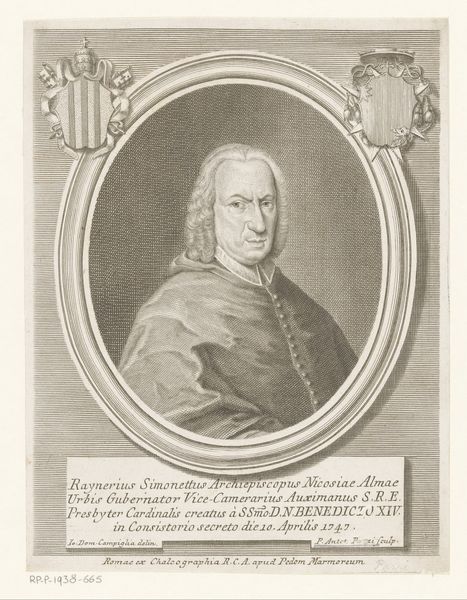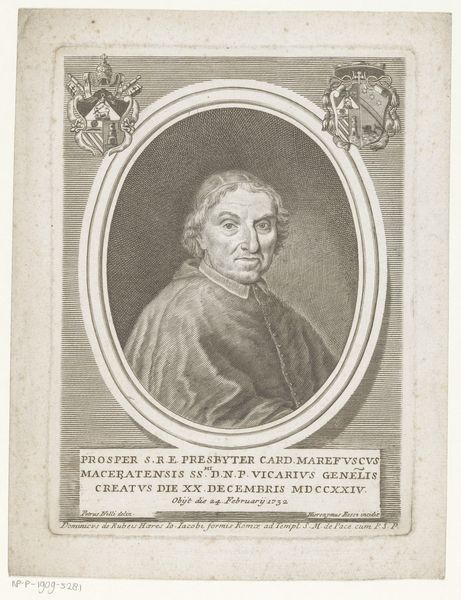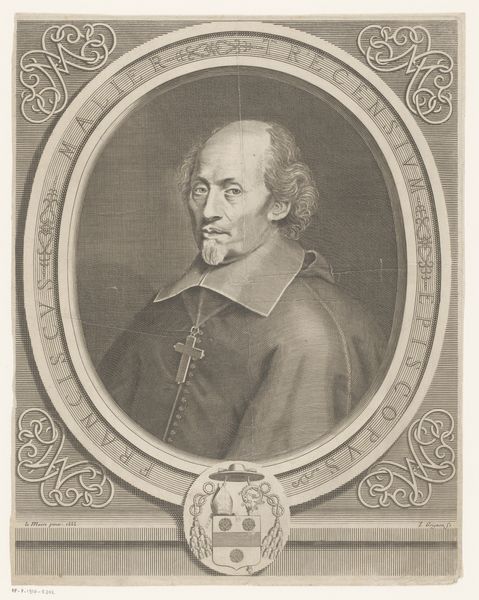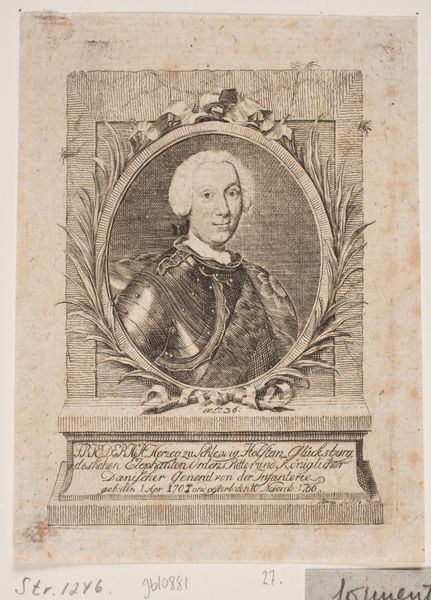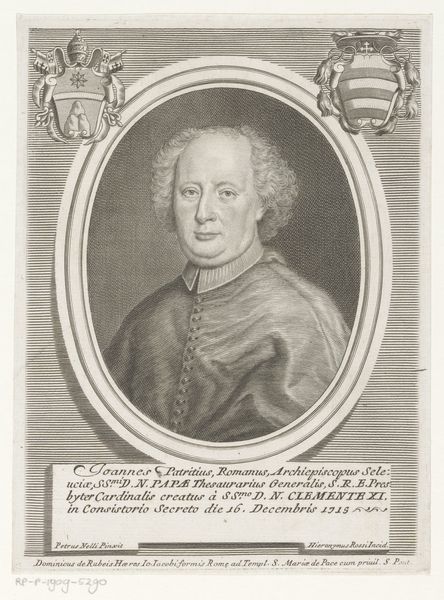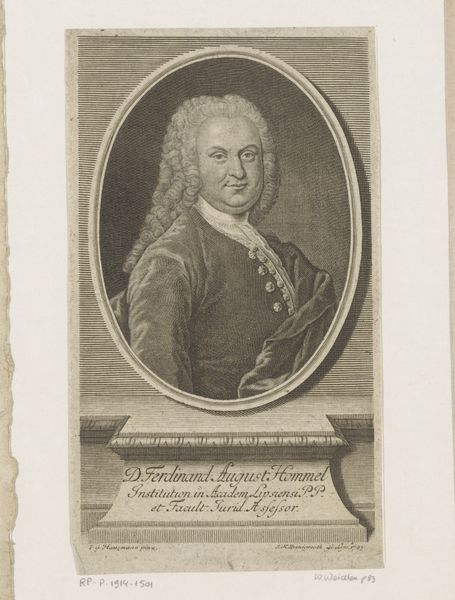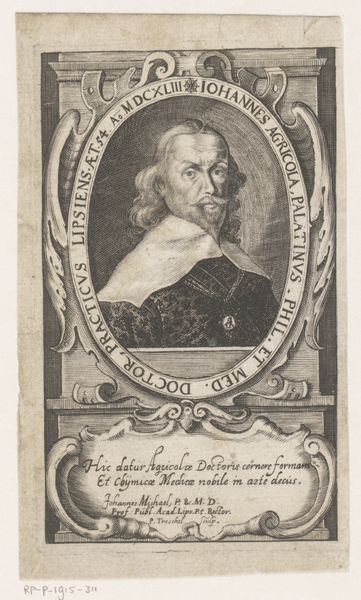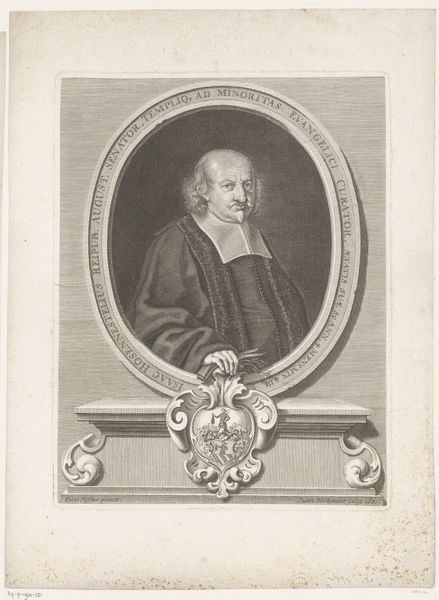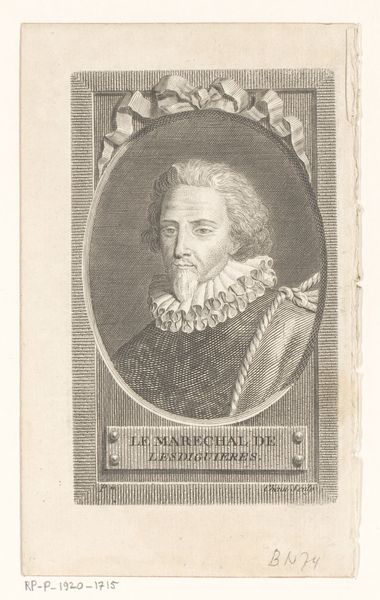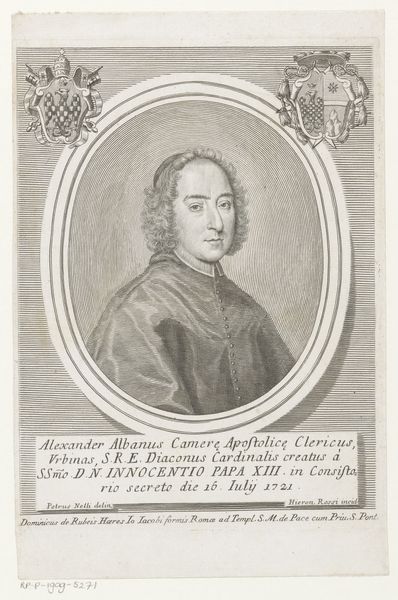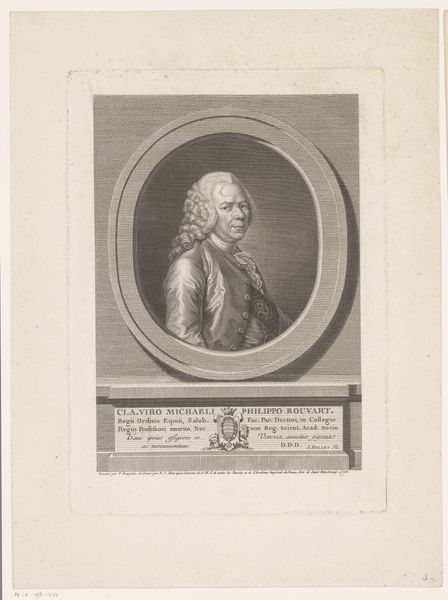
print, paper, engraving
#
portrait
#
baroque
# print
#
old engraving style
#
paper
#
archive photography
#
historical photography
#
line
#
history-painting
#
academic-art
#
engraving
Dimensions: height 214 mm, width 163 mm
Copyright: Rijks Museum: Open Domain
Curator: This is a print, "Portret van kardinaal Giuseppe Renato Imperiali," dating from between 1690 and 1762, housed right here in the Rijksmuseum. It's an engraving on paper by Girolamo (II) Rossi. The precision of the lines is incredible! Editor: Yes, I agree! It’s stunning to see how they captured so much detail, but what strikes me most is the contrast between the subject's serene expression and the quite rigid heraldic symbols. What story does it tell, do you think? Curator: Think about the means of production here. Engraving necessitates a specific kind of labor, a slow, meticulous process. Consider the materials themselves—paper and the metal plate—how does that interplay influence the final outcome? Furthermore, what's the social context of creating a printed portrait? Editor: Ah, I see. It's about reproducing images efficiently. Was this intended for the masses, making the Cardinal's image accessible, or was there a different type of circulation? Curator: Exactly! Who was the intended audience, and what power dynamics were at play? Remember, the consumption of these prints reinforces social structures and religious authority, reflecting on patronage, artistry, and social distinction through image circulation. Editor: That’s a different lens through which to see it – understanding the social function of reproducible portraits in Baroque society rather than simply appreciating the aesthetics of the image. I hadn't thought about the distribution network and its social implications before. Curator: Indeed. By focusing on the print's materiality and production, we gain a deeper understanding of its significance within the broader context of labor and social hierarchy. What do you make of the frame itself as another manufactured structure surrounding the portrait? Editor: Very true! It calls into question the artificial framing of individuals within specific societal roles. Thank you, now I look at art through its method and networks of creation rather than its message. Curator: Precisely. Exploring these material aspects provides a richer, more nuanced interpretation.
Comments
No comments
Be the first to comment and join the conversation on the ultimate creative platform.

